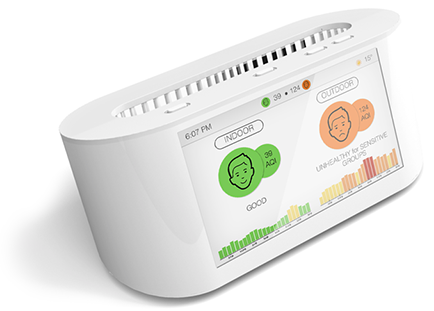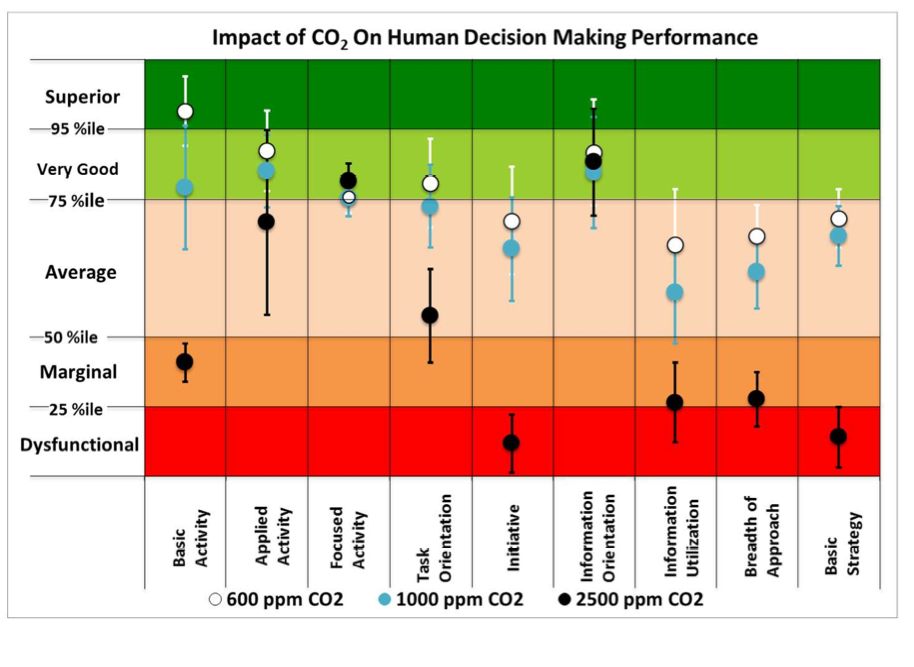Built by a long-term Beijing expat dad obsessed with keeping the air in his home safe for his family, the AirVisual Node could be a game-changer in the emerging home air quality monitoring market.
With prototypes in testing for the past few months and a limited rollout due in late February, the new device ups the ante in the air quality monitoring game by offering not just AQI readings, but weather and air quality forecasting as well as a CO2 monitor to tell if you're home or office is sealed just a little too tight.
RELATED: Which Air Quality Monitor Should I Buy?
The device draws comparisons to the Origins Laser Egg, which has taken Beijing by storm with its user-friendly interface and hip design since its launch last summer.
In a slightly larger but smartly designed package, the AirVisual adds real-time CO2 readings, a mini weather forecast, and outdoor AQI measures to one screen, making it an all-encompassing, one-look device. Its friendly interface uses icons and colors to signal air quality conditions.

A friendly interface provides current and forecasted air quality conditions
The device is but one portion of Yann Boquillod's eight-month journey towards what he envisions as a worldwide revolution in air quality awareness and protection. The other portion of his campaign is AirVisual's app and website, which have been providing thousands of Beijingers three-day air quality forecasts for months now, on the strength of word of mouth alone.
His site also provides air quality readings for over 5,000 cities worldwide, so if you'd like to gloat about Beijing's air being better than New Delhi's (or cry that it's not as good as Bali's), then this device is for you.
The forecasts that AirVisual provides are derived from a complex algorithm that factors in wind, air pressure, humidity, time of day, and neighboring pollution. We've been using their Beijing forecasts online for weeks, and for the most part they've been spot on – and sometimes even more accurate than the official pollution predictions provided by the city government.
Boquillod also claims his device will provide more accurate pollution readings and has a longer-lasting sensor when compared to other consumer-grade products on the market.
One area that he says contributes to the more accurate readings is the device's air flow control.
Most consumer-grade monitors use a fan similar to those used in desktop PCs to draw air past a laser sensor to derive pollution counts. However, many of these fans do not operate at consistent speeds, meaning the pollution readings can fluctuate as air gets drawn in at varying rates.
But its perhaps the AirVisual Node's on-board CO2 monitor that is the real game changer.
Many a Beijinger trying to make their home pollution-proof has keep their windows closed 24-7 and go out of their way to seal air leaks to the outside. As a consequence, carbon dioxide from exhalations can build up indoors, resulting in everything from lethargy to poor decision-making.

Researchers found that even moderately elevated levels of indoor carbon dioxide resulted in lower scores on six of nine scales of human decision-making performance
With the CO2 monitor, users can determine at what point the air in the space needs to be refreshed.
This can be counter-intuitive because it may actually be in your best interest to fully air out your living space for a brief period even when the AQI is nasty outside.
While the device is not yet on the market, AirVisual is currently running a contest for free devices on its site and will launch a Kickstarter campaign next week to fund mass production of the device.
By Michael Wester
Images: AirVisual, Berkeley Lab
Using WeChat? Scan QR Code or Press the Fingerprint Below ↓
--- (Or ADD WeChat ID: OKOKOKOKnet)
